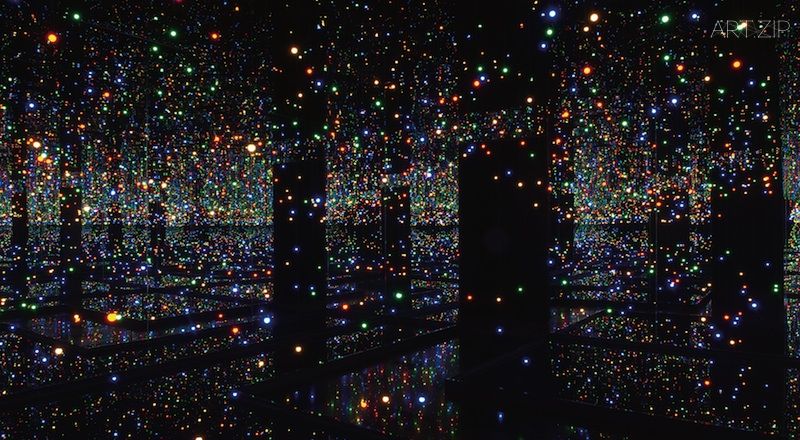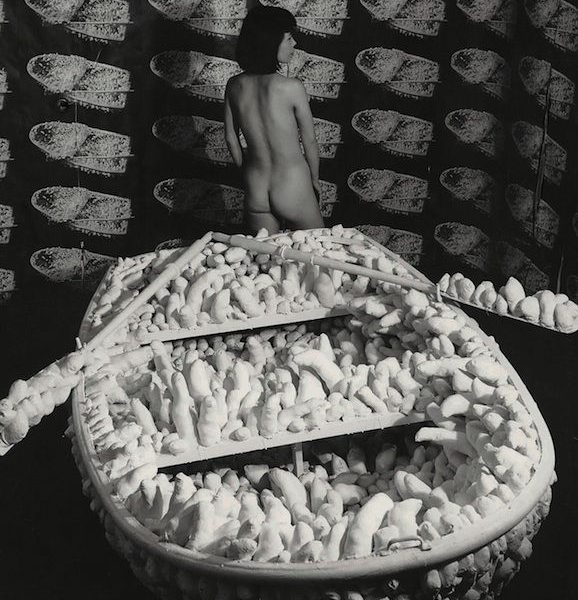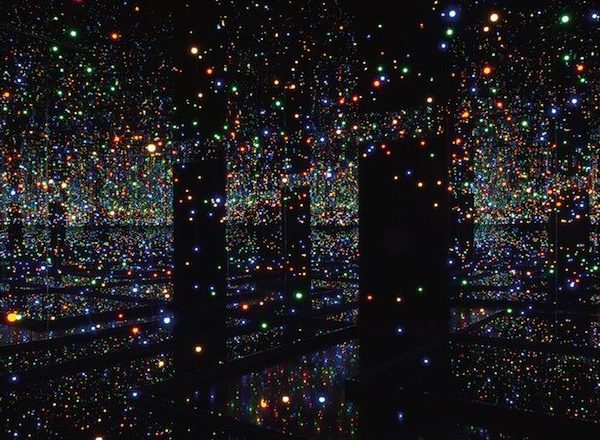
Yayoi Kusama’s pioneering work spans over six decades and this exhibition will highlight the artist’s moments of most intense innovation. Kusama is one of Japan’s best-known living artists and since the 1940s she has developed an extensive body of work. From her earliest explorations of painting to new unseen works, the exhibition will reveal a history of successive developments and daring advances, demonstrating why Kusama remains one of the most engaging practitioners today.
Conceived as a series of immersive environments, the exhibition will unfold in a sequence of rooms, each devoted to the emergence of a new artistic stance. Much of Kusama’s art has an almost hallucinatory intensity that reflects her unique vision of the world, whether through a teeming accumulation of detail or the dense patterns of nets and polka dots that have become her signature. She is renowned for her ‘environments’, large-scale installations of dazzling power that immerse the viewer.
In her early career Yayoi Kusama immersed herself in the study of art, integrating a wide range of Eastern and Western influences, training in traditional Japanese painting while also exploring the European and American avant-garde. In the late 1950s, Kusama moved to the United States and during this time Kusama forged her own direction in sculpture and installation, adopting techniques of montage and soft sculpture which historians have seen as influencing artists such as Andy Warhol and Claus Oldenburg. As the 1960s progressed, Kusama moved from painting, sculpture and collage to installations, films, performances and ‘happenings’ as well as political actions, counter-cultural events, fashion design and publishing. In 1973 Kusama returned to Japan where she continues to live and work today.
草間彌生(Yayoi Kusama)的開創性工作已經跨越了六十年,此次展覽突出了藝術家每個具有強烈開創性的時刻。草間彌生是二十世紀四十年代以來日本最著名的在世藝術家之一。她不斷發展其極具個人張力的藝術風格。從她最早期對繪畫的探索期作品到她未曾被展出過的新作,展覽涵蓋了她成功發展和大膽前進的歷史,闡釋了為甚麼草間彌生直至今日仍是最迷人的藝術實踐者之一。
作為一系列擬真環境的構想,展覽在一系列的展廳中以不同的的藝術立場為基調展現於觀眾眼前。草間彌生的大部分藝術有一種近乎幻覺的張力,反映了她對於世界的獨特視角,或是豐富細節的堆積,或是密集網狀與波爾卡圓點,這些都已經成為了她獨特的標誌性符號。那些令人眼花撩亂的大型裝置無不震撼著觀者。
草間彌生的早期藝術一直專注融合東西文化的藝術研究,在接受日本傳統繪畫的同時她也不斷探索歐洲和美國的前衛藝術。在二十世紀五十年代晚期,草間彌生移居美國,在雕塑和裝置領域發展自己的藝術方向,採用蒙太奇和軟雕塑的方法,藝術史學家認為她是受到了安迪 · 沃霍爾(Andy Warhol)和克勞斯 · 奧爾登堡(Claus Oldenburg)等藝術家的影響。到了六十年代,草間彌生從繪畫、雕塑和拼貼畫方向移至裝置、影像、行為藝術、偶發藝術的方向,同樣還有政治行為、反文化運動、服裝設計以及出版行業。在1973年,草間彌生回到了日本生活並繼續她的藝術至今。




